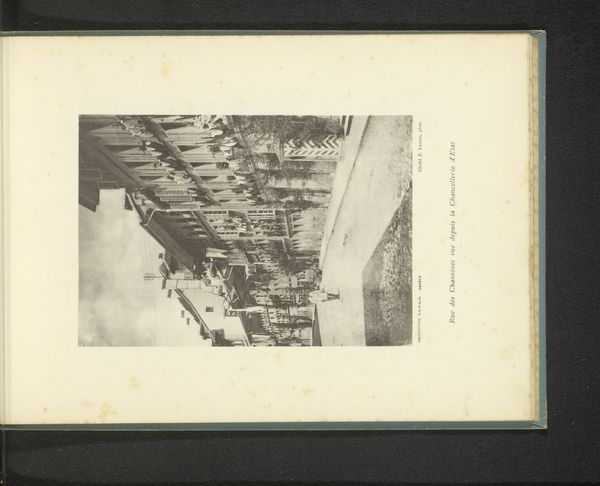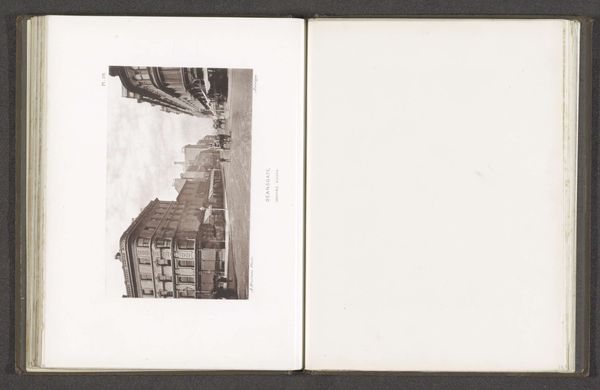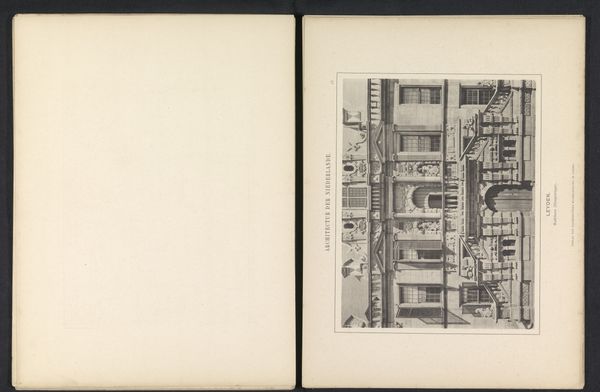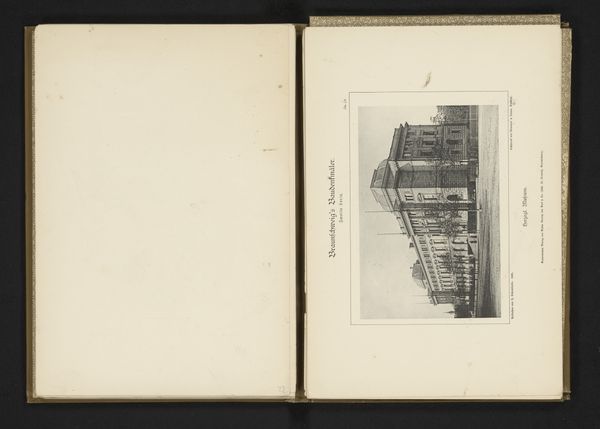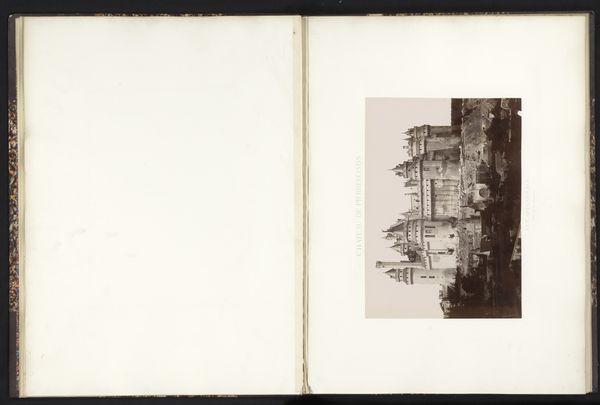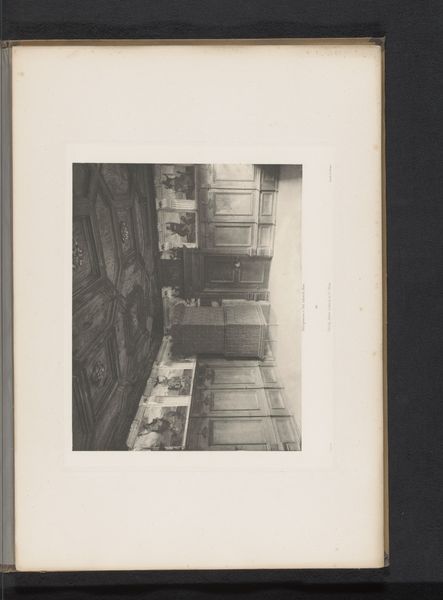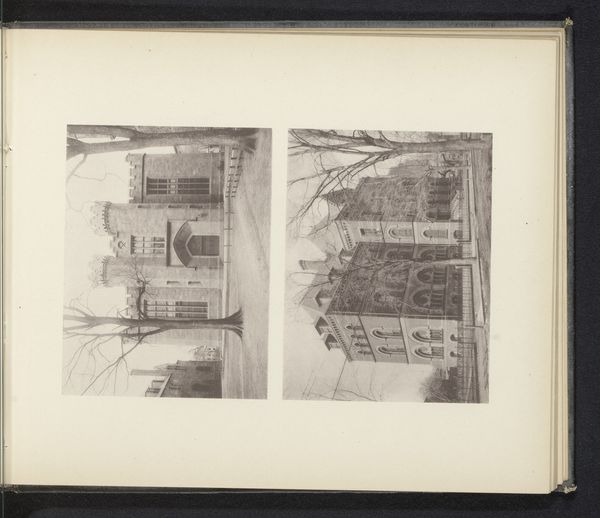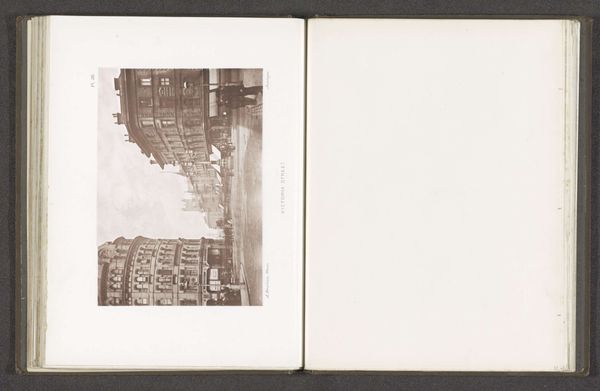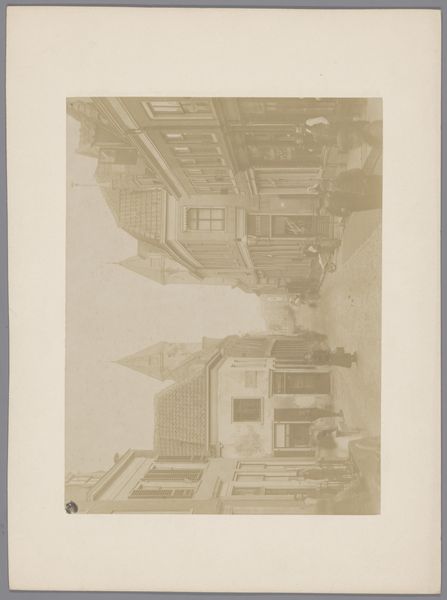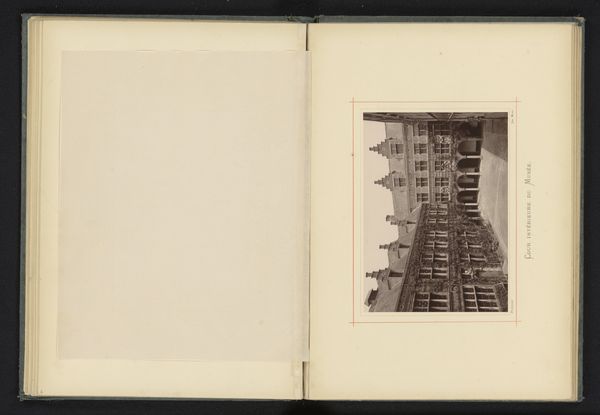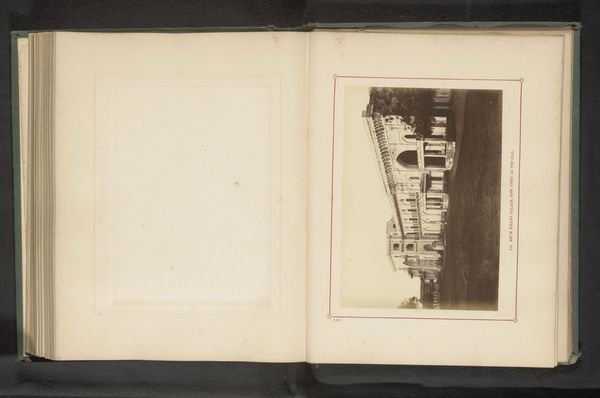
photography
#
african-art
#
street-photography
#
photography
#
cityscape
#
realism
Dimensions: height 237 mm, width 176 mm, height 332 mm, width 260 mm
Copyright: Rijks Museum: Open Domain
Editor: This is Marc Ferrez's "Street View in Rua Primeiro de Março in Rio de Janeiro," a photograph taken sometime between 1890 and 1910. The long shadows give it a timeless, almost haunting quality. What catches your eye in terms of the historical or social narrative? Curator: It's striking how Ferrez captures this moment of rapid modernization in Rio. Look at the grand European-style architecture juxtaposed with what appear to be workers near the bottom. What kind of visual dynamic do you think Ferrez is setting up between progress and the people who facilitate it? Editor: I see what you mean. It’s like he's showing the contrast between the booming economy and the everyday lives of those making it possible, perhaps suggesting a social stratification. Was he intentionally commenting on the societal shifts? Curator: Possibly. During this period, Rio de Janeiro underwent massive urban reforms aiming to create a "civilized" European image, often displacing the Afro-Brazilian population. Understanding the socio-political forces during the Belle Époque gives the image greater historical weight. Are the people visible at street-level perhaps examples of the social costs of modernization? Editor: That makes so much sense. Knowing that context makes me look at the photograph completely differently, like there are two different societies living on the same street. The figures almost appear segregated, which emphasizes social stratification. It's much more than a simple "street view." Curator: Precisely. Images like this remind us of the public role that photography has, or can have. Not simply recording, but shaping how we understand the past and, maybe, even prompting critical re-evaluations of present inequalities. It encourages me to analyze imagery for social power dynamics. Editor: I hadn't thought about photography that way, and I find it truly fascinating to think about the photographer's intentions through this lens of history.
Comments
No comments
Be the first to comment and join the conversation on the ultimate creative platform.
